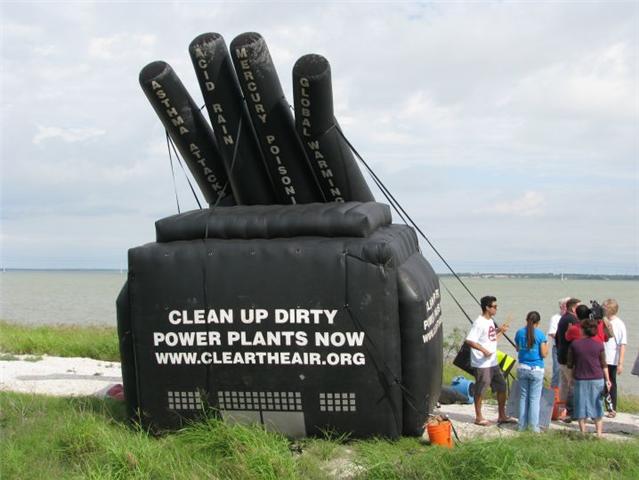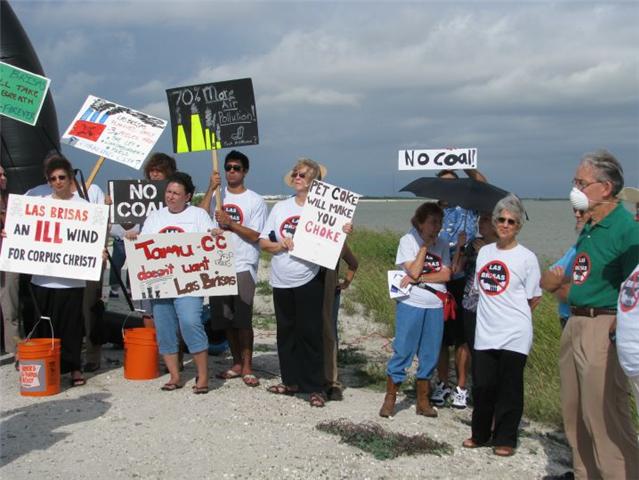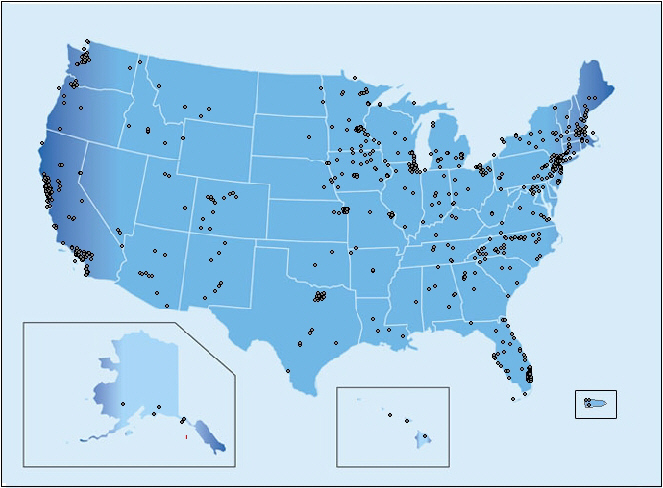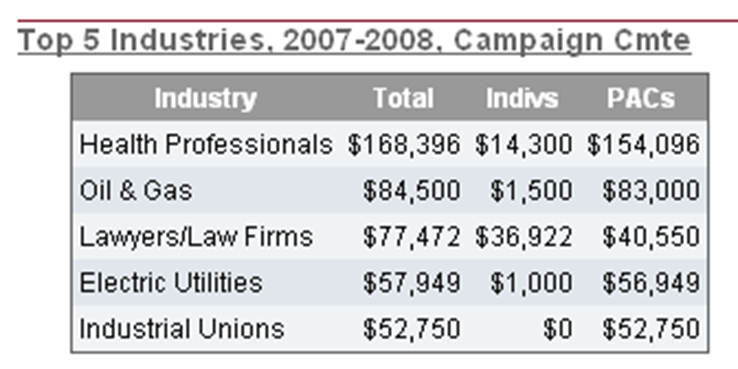
Peabody Coal, presently the largest Coal Mining Company in the World
Take a quick look at this article/video. After the showing of a comedic political documentary, a speech is made about mountain-top removal mining and its ill effects. The crowd of enthusiastic movie-goers then canvasses the sidewalks of a nearby JP Morgan Chase bank with coal graffiti. It brings up an interesting point about who’s surreptitiously lurking behind the companies that deal with coal. In a word, banks.
Let’s reflect for a bit on the role of banks in (or rather behind) coal-related issues. For starters, it’s a tricky situation because the banks don’t actually do any of the polluting or emitting, they merely finance it:
One could take one of two extreme standpoints on the environmental impact of banks’ products. On the one hand, all pollution caused by companies who are financed by banks is the responsibility of banks. It is easy to make an estimate of the environmental impact in this sense: it would equate to almost the aggregate pollution of the whole economy in many countries. On the other hand, as the products of banks do not pollute, the users of those products—the clients—should take sole responsibility for the pollution they create. Of course, both standpoints are absurd. The truth lies somewhere in the middle
(taken from a paper on sustainable banking).
As usual, it’s that middle ground which is very hard to find in the real world.
The Rainforest Action Network has put together a very informative pamphlet concerning banks (particularly Citi and Bank of America) and their relationship to coal in the US. Here are just a few numbers taken from this publication:
- There are about 150 proposed coal-fired power plant sites in the US currently, with an estimated price-tag of approximately 140 billion dollars for the lot. This might be considered another ‘coal rush,’ and someone will have to finance all of this. You might think of this as adding 100-180 million passenger cars to US roads.
- Citi and Bank of America have both been major financiers of Peabody Energy, the world’s largest coal mining company. Peabody has been involved in mining coal on the Black Mesa (Hopi Indian community land), where they have drained millions of gallons of water from the sole aquifer in the area and left behind a 273-mile coal slurry pipeline.
- Both banks have also underwritten numerous loans for other coal mining companies including Massey Energy, Arch Coal, and Alpha Natural Resources. Each of these companies is involved in mountaintop removal, a particularly destructive form of coal mining.

Citi Bank
The World Bank is not setting a very good example, either. The Bank has acknowledged that the developing world should not become locked into the same carbon-intensive infrastructure of the West, yet it still intends to help fund coal-fired power plants in several developing nations. It’s a hard line to walk, that between developmental and environmental issues, however there are more sustainable alternatives available and with the right planning and finance, these could become a reality.

Bank of America
But let’s step away from the blame game. No matter who is the most responsible – the bank or the polluter – the fact is that banks, with their abundant resources, should be clever and forward-thinking enough to see the non-sustainability of coal as an investment. Conversely, there abound investment opportunities in clean, sustainable energy. For example, Lord Browne, former head of BP, has urged the British government to direct government-controlled bank investment into renewable energy resources, such as offshore wind power. Germany has been a leader in sustainable energy investment; look at this report from the Deutsche Bank. In the US there have been proposals for a Green Bank which would, among many other things, help to drive much-needed capital investment into clean-energy technologies and infrastructure.
This isn’t just green tomfoolery, it could be money in the bank (literally).
J Baker.


 It has been less than 24 hours since I received a copy of
It has been less than 24 hours since I received a copy of 
 Climate change is clearly an important issue, and there is a lot that needs to be done about it at all levels of society.
Climate change is clearly an important issue, and there is a lot that needs to be done about it at all levels of society.
 While we at Public Citizen Texas are fighting the building of new coal power plants in Texas and the surrounding states, the focus has largely been on the CO2, sulfur and other pollutants emitted into the air by the burning of coal, not to mention its inefficiency as a fuel source.
While we at Public Citizen Texas are fighting the building of new coal power plants in Texas and the surrounding states, the focus has largely been on the CO2, sulfur and other pollutants emitted into the air by the burning of coal, not to mention its inefficiency as a fuel source.


